This response is incorrect. See below for the correct answer.
Coaptation Devices for Elbow Hygromas
Jessica Wiley Montoya, LVMT, CCRP, VTS (Surgery), University of Tennessee
Karen M. Tobias, DVM, MS, DACVS, University of Tennessee
Hygromas
Hygromas are soft, benign, fluid-filled masses that form over bony prominences in young adult large- and giant-breed dogs in response to repetitive pressure or blunt trauma.1-3 Hygromas are typically located over the elbows, although they have been reported in other regions (eg, tuber calcaneous, tuber ischium, carpus; Figures 1 and 2).1 As the bony prominence hits the floor or other hard surfaces, subcutaneous tissue over the bone is damaged. Repetitive trauma results in formation of a pocket of serous fluid that is surrounded by a fibrous capsule and, in some cases, contains granulation tissue.1-3
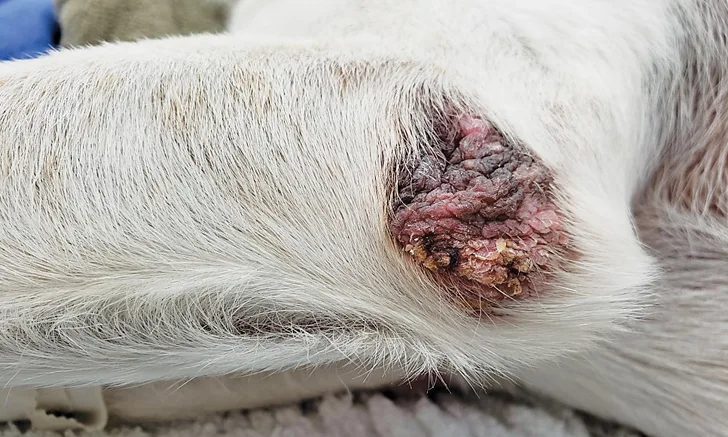
Chronic, nonulcerated hygroma on the left elbow of a healthy large-breed dog
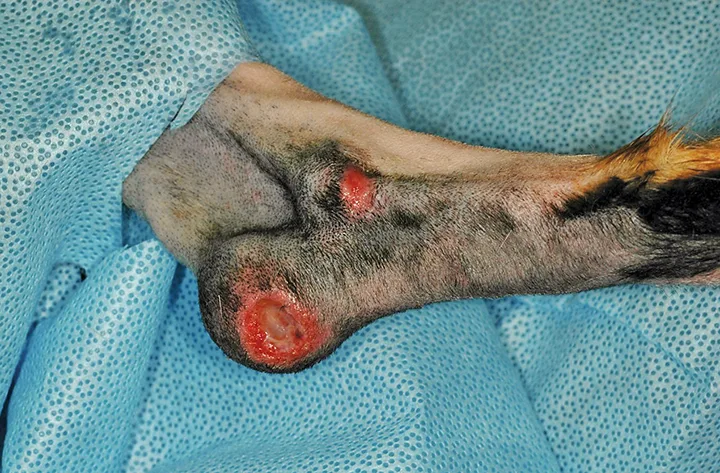
Ulcerated hygroma on the tarsus of a dog with a plantigrade stance secondary to neuropathy
Most hygromas are nonpainful, but they can enlarge, ulcerate, and become infected (Figures 2 and 3).1-4 Prevention of hygroma formation and treatment for small, nonpainful hygromas involves elimination of blunt trauma to bony prominences by providing appropriate bedding or applying regional padding or coaptation devices (eg, casts, splints, bandages).1,4,5 Large, ulcerated, or infected hygromas may require culture, drainage, open wound management, or surgical resection and reconstruction.1-3,6 Even after aggressive treatment, pressure-relieving measures must be continued to allow the site to heal and to prevent future recurrences.3
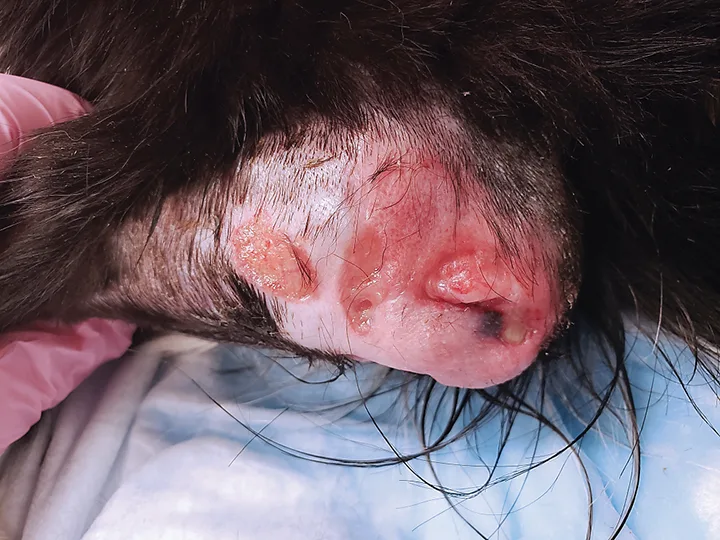
Chronic ulcerated elbow hygroma
When selecting or manufacturing a coaptation device, fit is the most important consideration. An ill-fitted coaptation device can result in discomfort, swelling, dermatitis, local tissue necrosis, ulcerations, and muscle atrophy from immobility. In addition, if appropriate positioning is not maintained, the device may not protect the area adequately from further trauma. The device should be lightweight and inexpensive, distribute pressure away from bony prominences, allow unimpeded motion and mobility, and permit appropriate blood flow to the region.4,7 Doughnut-style padding can be helpful for prevention of hygroma formation or enlargement (Figure 4). However, in dogs with ulcerations (Figure 5) or surgical reconstructions, doughnut-style padding redistributes pressure circumferentially to all surrounding tissues, inhibiting blood flow and healing.4 Application of padding distal to the hygroma (Figure 6) can prevent contact of the region with hard surfaces while allowing joint movement and maintaining blood flow along the proximal half of the area. A homemade system from readily available products is especially useful when owner travel is restricted.
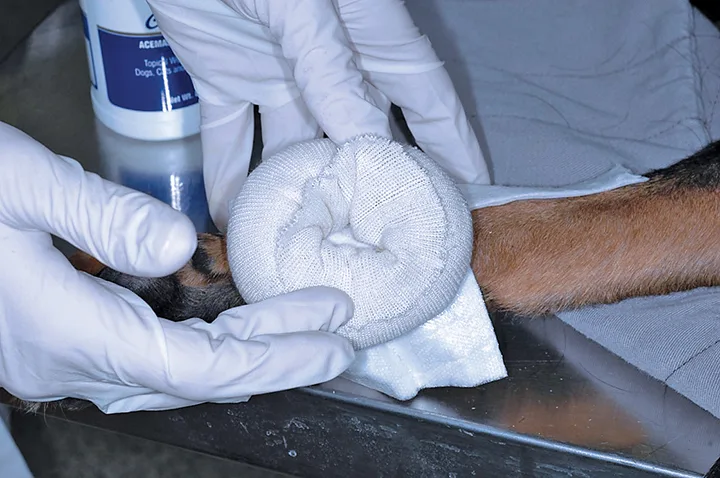
Doughnut-style padding is used to reduce pressure over the boney prominence on the right forelimb near the carpal pad.
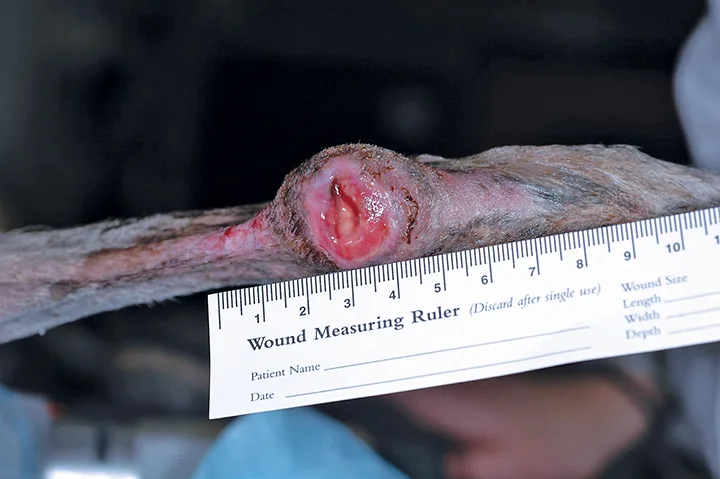
Ulcerated tarsal pressure sore
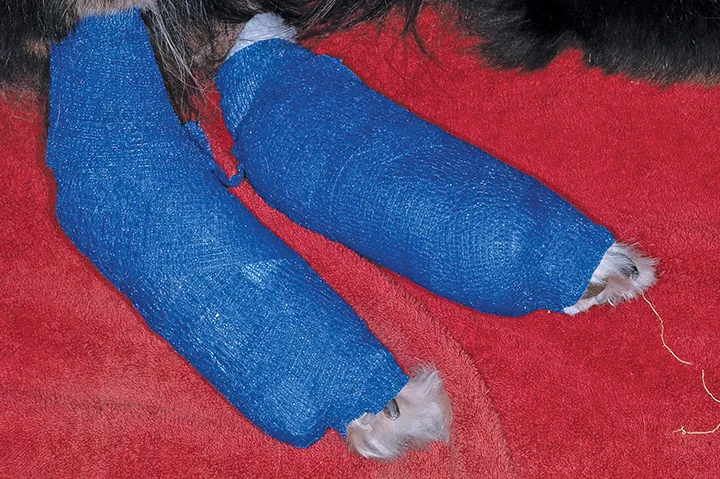
Foam padding is added to the plantar surface of the feet of the dog in Figure 5 to prevent direct pressure on the calcaneal processes
Counseling, monitoring, and additional recommendations on care should be based on appearance of the affected area.
Step-by-Step: Placing an External Coaptation Device to Reduce Pressure on Elbow Hygromas
What You Will Need
Pool noodle (hollow) or pipe insulation
Stockinette or a washable stocking, sleeve, or legging material
Measuring tape and marker
Scissors or box cutter
Velcro straps, Velcro tape, or adhesive elastic tape
Thin foam or extra piece of pool noodle for large limb
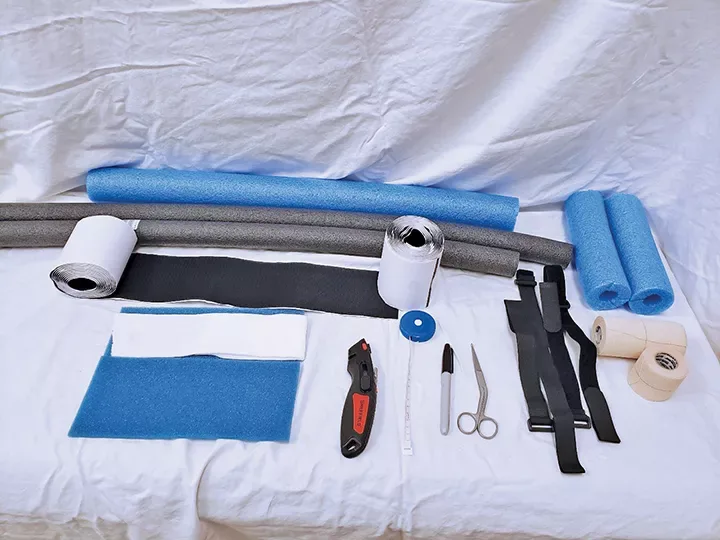
Step 1
Starting from a point 1 inch below (ie, distal to) the olecranon, or the lowest point of the hygroma, measure the distance to the carpal pad.
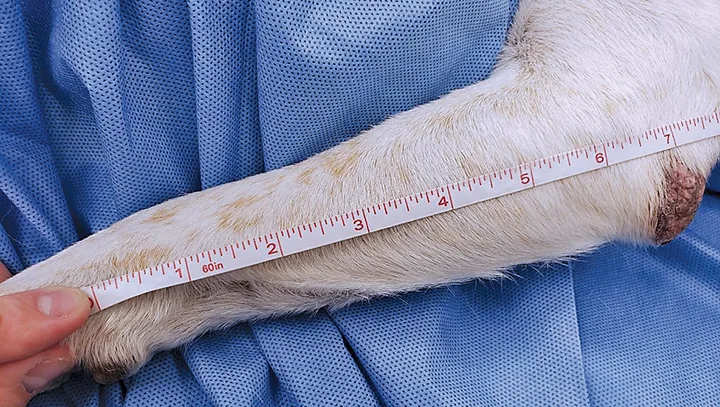
Step 2
Mark a pool noodle with the measurement from Step 1. Cut it to the appropriate length, then use scissors or a box cutter to split it down the center of one side lengthwise.

Step 3
Cut a piece of stockinette at least 4 inches longer than the pool noodle, then slide the stockinette on the patient’s leg so that it extends above the elbow and below the carpus. Provide the pet owner with extra stockinette so soiled pieces can be laundered.
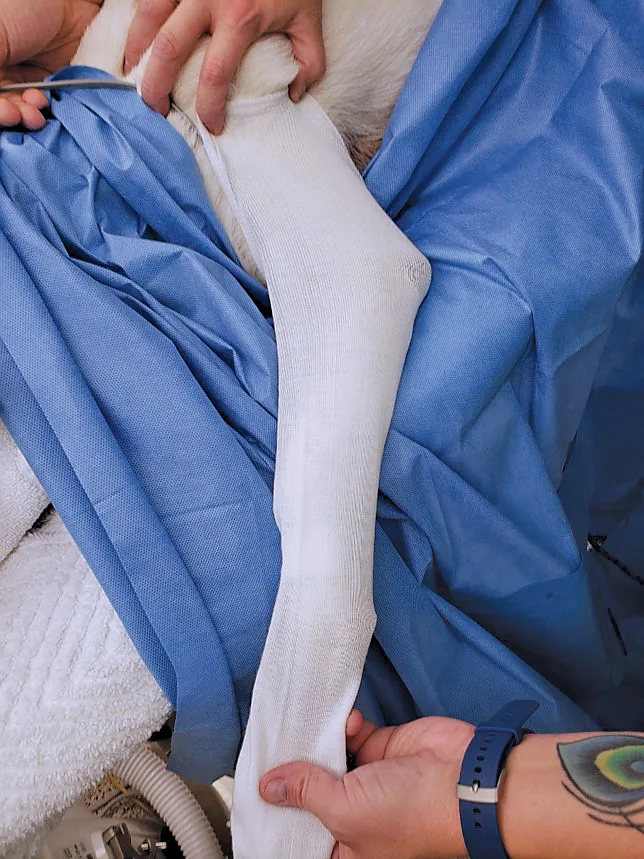
Step 4
Open the pool noodle and slide it over the caudal aspect of the leg. Pull down the excess cuff of stockinette over the proximal and distal edges of the pool noodle, then secure the noodle and stockinette in place with Velcro straps, Velcro tape, or adhesive elastic tape.
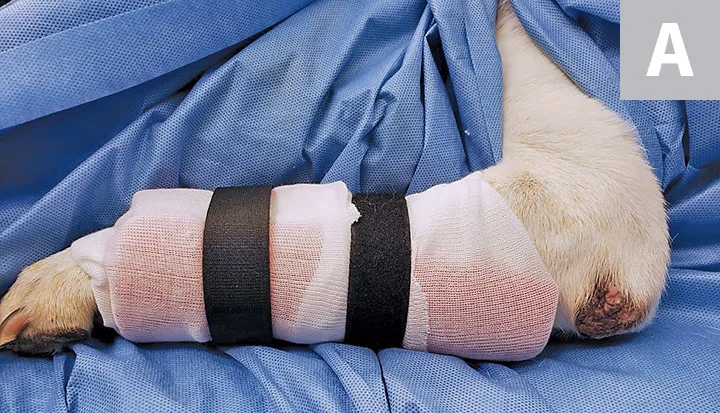
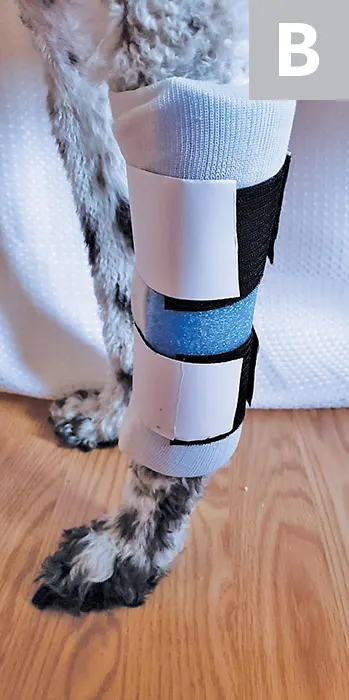
Author Insights
The pool noodle elevates the limb off the floor to prevent abrupt or traumatic compression along the pressure point. Because the noodle is placed only along one side of the region experiencing pressure, it does not apply 360-degree compression of the tissues as a doughnut bandage would and therefore does not obstruct blood flow all the way around the affected area.
If the Velcro straps or tape cause pressure on the cranial or dorsal aspect of the limb, especially if the limb is large, add a piece of foam to fill the gap between the split sides of the noodle to prevent pressure sores or irritation.
Step 5
Assess the fit of the device by watching the dog walk and checking for any pressure points.
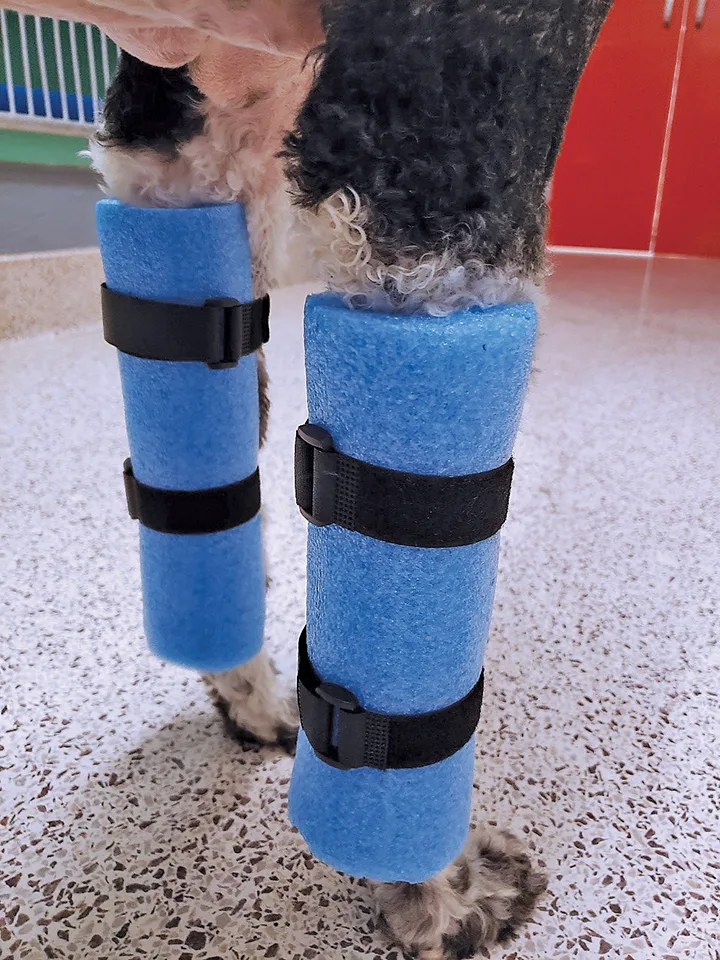
Author Insight
For dogs without open wounds, placement of a stockinette under the device may be unnecessary (as shown in the photo).